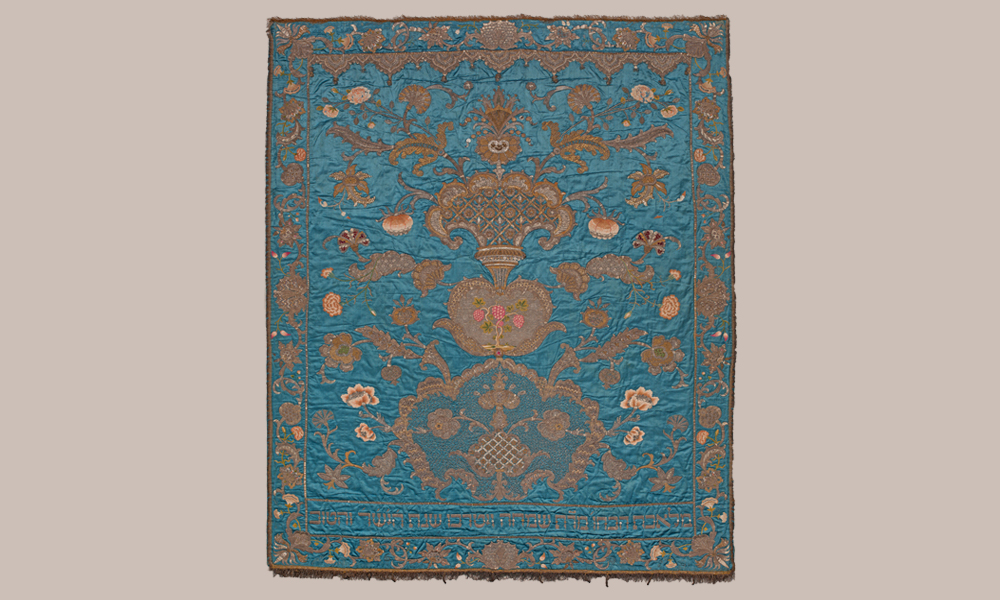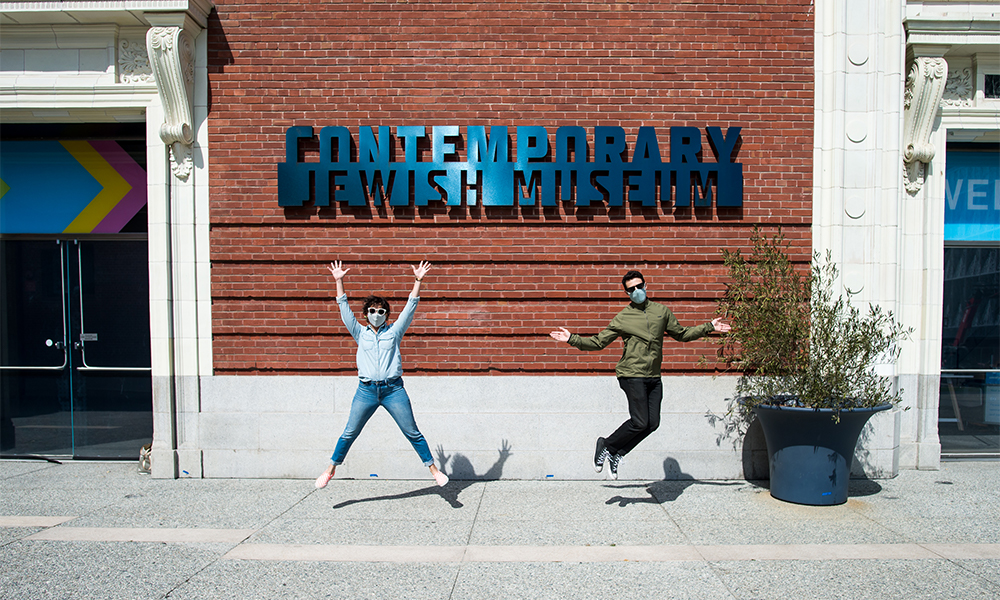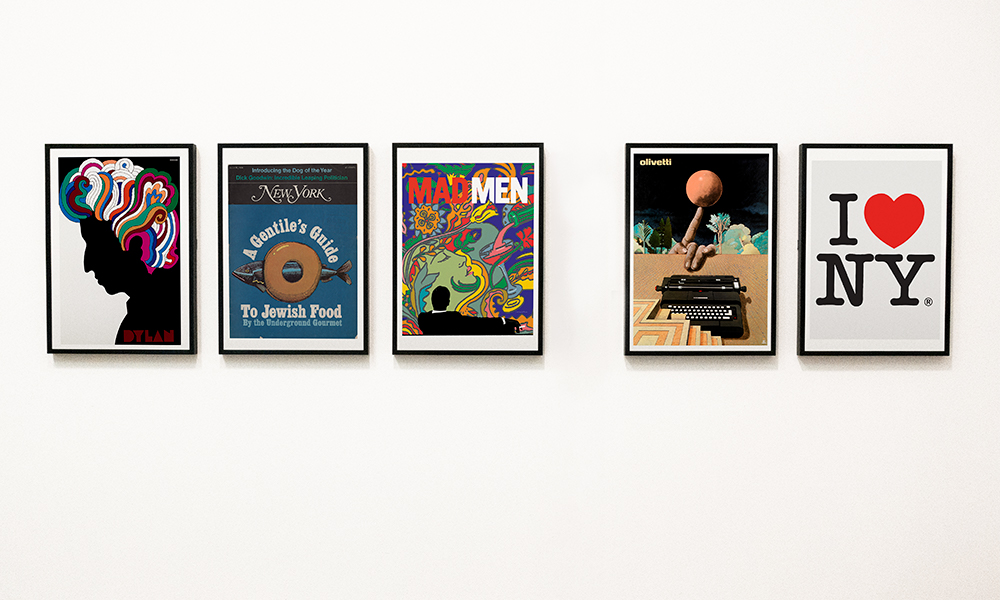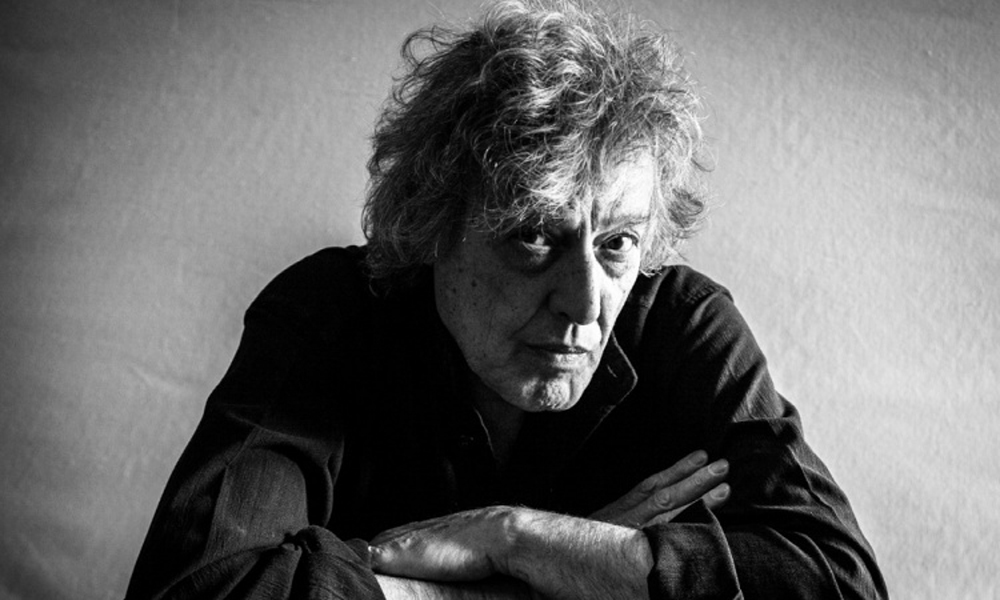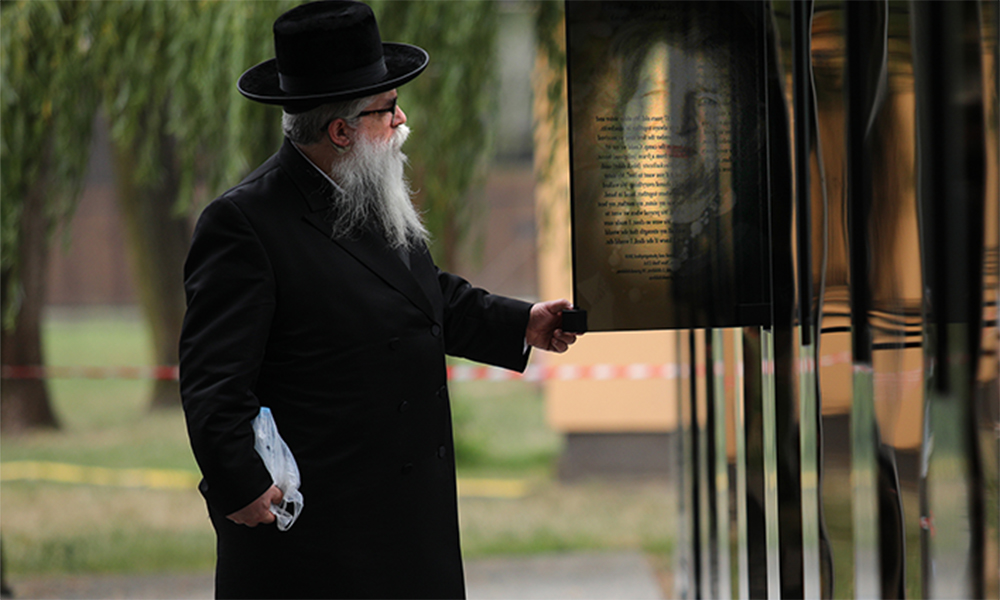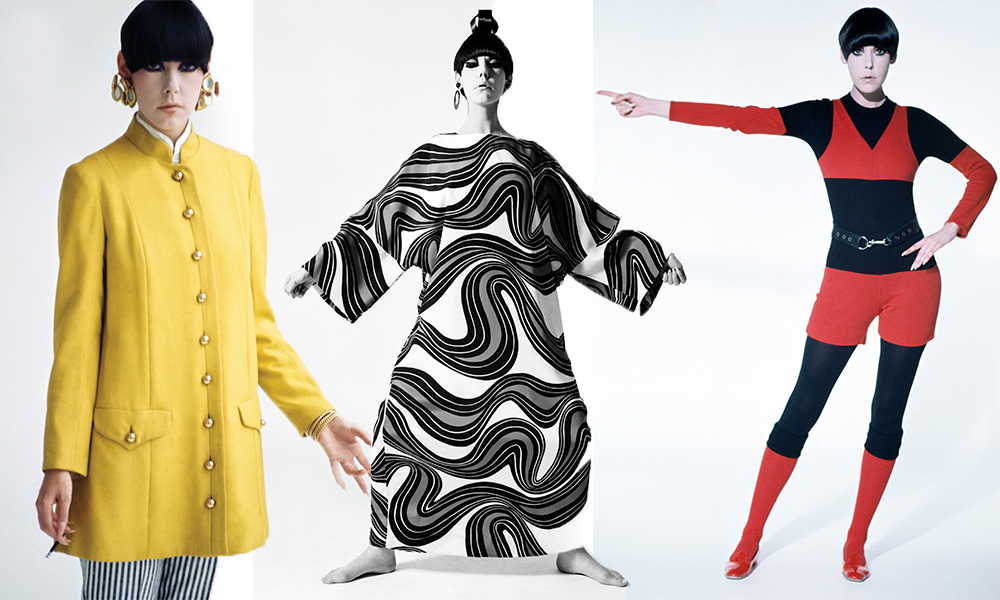When Edith Halpert posed for painter Bernard Karfiol’s 1935 portrait, seated with her little dachshund at her side, she wore a bold maroon-colored, cowl-necked gown that revealed the broad shoulders, solid arms and competent hands of a woman who was both independent and worked for a living. She was a businesswoman and a pioneering gallerist who began her career in the age of self-invention, the Jazz Age, and used her imagination to help develop a new idea of American art that was modern and confident. New York City’s Jewish Museum is currently honoring her achievements with a new exhibition, “Edith Halpert and the Rise of American Art,” on view through February 9. The show, thoughtfully curated by the museum’s Rebecca Shaykin, brings together 100 artworks that were exhibited in Halpert’s gallery or were part of her own collection, ranging from a circa 1846 version of The Peaceable Kingdom, attributed to Edward Hicks, to Stuart Davis’s lyrically modern Egg Beater No. 1, from 1927.
Who was Edith Halpert? Her birth name was Ginda Gregoryevna Fivoosiovitch and, according to a series of interviews she did for the Smithsonian’s Archives of American Art in the early 1960s, she came from a well-off and secular Jewish family in Odessa, Russia (now Ukraine). Her father worked in the grain business, but he died in 1903 when she was just three years old. In the transcripts she says that her family came to America “largely by accident,” but in reality, they left Russia just after the violent pogroms of 1905, when 300 Odessa Jews were murdered and tens of thousands lost their homes. When Edith—as she became known in the U.S.— her older sister and their mother arrived in New York City, they were met by a half-uncle, who promptly mismanaged their finances and lost most of their remaining money.

Stuart Davis’s Egg Beater No.1, from 1927
In Harlem, Edith’s mother opened a stationery shop and sold penny candy and peanuts. Edith helped in the store when she was a child and as a teenager went to work in a variety of positions at department stores, later becoming a “systematizer,” or efficiency expert. Even as a young girl, her mind was a mix of sharp intelligence and fiery energy. Her family of all women was unobservant, and Halpert was embarrassed about her ignorance of Jewish tradition. To learn the rudiments of Hebrew and Yiddish, she hired a rabbi to tutor her, but when she heard the words for the men’s morning prayer praising God “who has not made me a woman,” she became enraged and never returned to her lessons. To satisfy her more creative inclinations, she took art classes and became friends with many artists and dealers in the small community of New York’s art world. She fell in love with the much older artist Samuel Halpert, an impressionistic painter who was known for his use of rich color contrasts. His work had been exhibited in Paris’s Salon d’Automne and in the 1913 Armory Show in New York. When she married him, just after her 18th birthday, Edith felt she had “married American art.”
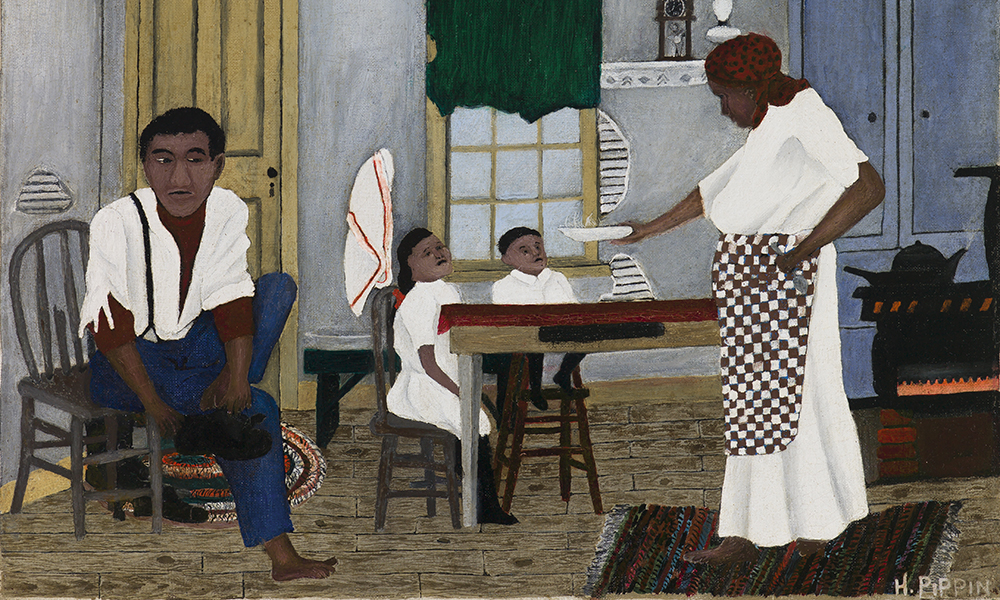
Horace Pippin’s 1943 Sunday Morning Breakfast
It didn’t take long for her to conclude that her marriage had been improvident. Sam was morose, jealous, controlling, and couldn’t bear to be overshadowed by his genial young wife. The story goes that Edith, an arresting presence with her dark, rounded eyebrows, heart-shaped face and rosebud mouth, burned all her artwork in a cellar stove because one of her teachers, who was also a friend of Sam’s, told her she didn’t have enough talent to succeed as an artist. Decades later, she recalled the pain when she realized how the two men had colluded against her because Sam wanted to keep her on the sidelines, tending house and posing as his model. “I’m not the crying kind,” she said, and then recalled looking at her wooden artist’s pallet for a long time before breaking it across her knee and throwing it too into the fire.
In many ways, Edith Halpert embodied the spirit of American pragmatism, which is how she explained herself: “I either had to stagnate, which was a thing I dreaded, or go ahead, and the only way to go ahead was to do something beyond what I was doing. It was that simple. I’m sure a lot of people have the same compulsion—you know, to get to some other place.”
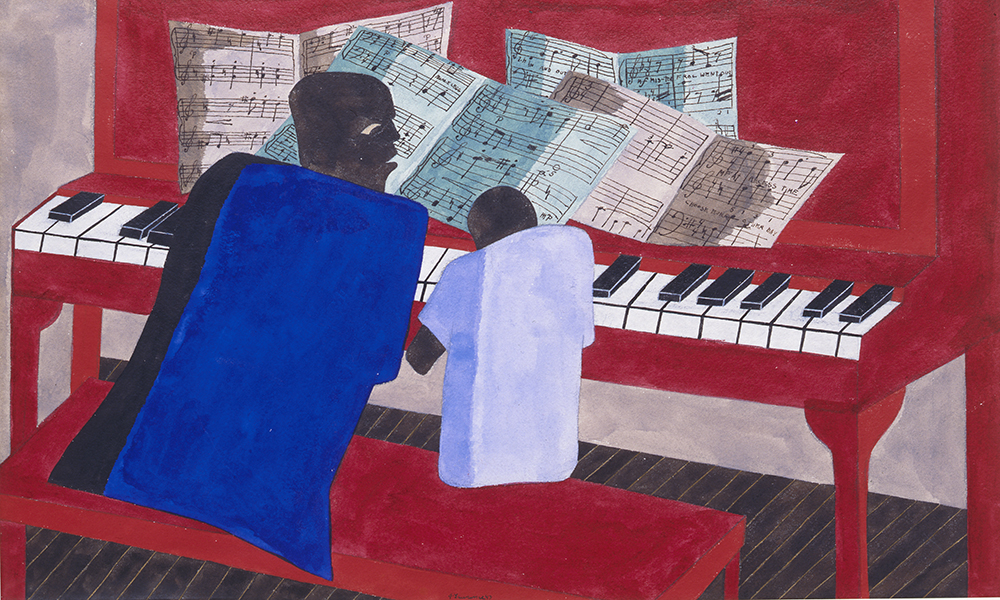
Jacob Lawrence’s 1943 The Music Lesson
In 1926, Halpert, then just 26, opened an art gallery in Greenwich Village with the intention of using the skills she had learned in merchandising and the business world to represent and promote modern American artists, who up until that point had been overshadowed by the School of Paris. The gallery, first called Our Gallery and then renamed the Downtown Gallery, was located on the ground floor of a brownstone she bought with a silent partner at 113 West 13th Street. There would be no dogma, she wrote in the gallery’s inaugural announcement, “no special prejudice for any school,” except to showcase what would be “enduring.” She had a good eye, a knack for marketing and social graces and quickly developed a following of loyal clients, many attracted by exhibits such as the one she titled “Art for Everybody: $10-$50.” It was both shrewd and idealistic to position herself as a link between politically minded modern artists such as Charles Sheeler and Ben Shahn and the middle- and working-class residents of her neighborhood. She organized seasonal exhibitions, arranging an annual Christmas show, for instance, curated with gift giving in mind. She even initiated an installment plan for those who didn’t have ready cash. She thrived on the activity generated by the gallery, and her feelings of pride and self-sufficiency were the death knell for her marriage. She separated from Sam in 1927 and divorced him in 1930. He died a few months later.
Over time, Halpert invited lecturers to the gallery and developed traveling exhibitions. Her artistic judgment had considerable ramifications. Abby Aldrich Rockefeller became her major patron (biographers have called her Halpert’s “patron saint”). More than 25 percent of the 2,000 modern artworks Mrs. Rockefeller donated to New York’s Museum of Modern Art were originally purchased from Halpert or bought on her recommendation. Similarly, Halpert influenced collections now housed in such prestigious institutions as the Metropolitan Museum of Art, the Los Angeles County Museum of Art, the Phillips Collection and the Museum of Fine Arts, Boston.

Bernard Karfiol’s 1935 portrait of Halpert and her dog Adam
From the beginning, Halpert used folk art and furniture to complement the modern art she was exhibiting. Inexpensive painted chests or carved wooden figurines worked especially well beside modern pieces by such artists as sculptor Elie Nadelman, who blended aspects of folk art with his own style. In 1931, she officially expanded her business, opening the American Folk Art Gallery on the second floor of her brownstone, thus becoming one of the first dealers to see the connection between the streamlined structures and forms of Modernism and the simple clarity of 18th- and 19th-century craftsmanship. As her reputation grew, Halpert organized large government-funded art exhibits outside the gallery. In 1934, with the sponsorship of Mayor Fiorello La Guardia, she took charge of the First Municipal Art Exhibition at Rockefeller Center, which drew in 20,000 people its first week. She participated in the Federal Art Project, arranging national exhibitions as part of the Works Project Administration. In 1959, she curated the American National Exhibition in Moscow, which introduced Jackson Pollock’s drip paintings to the Soviet Union.
There are many pleasures in the Jewish Museum’s show, among them several pieces by Halpert’s friend William Zorach. His gracefully elongated, Art Deco-style Spirit of the Dance is a bronze version of the larger aluminum sculpture commissioned for Radio City Music Hall. Other highlights include Georgia O’Keeffe’s glorious airborne Poppies and Horace Pippin’s poignant Sunday Morning Breakfast, depicting an African American family in a homely kitchen before church time. Halpert represented many women, minorities and self-taught artists. A large circle of her artists were Jewish—Zorach, Nadelman, Max Weber and Ben Shahn, for example—and many of them brought the culture of the European Jewish avant-garde to America.

Georgia O’Keeffe’s 1950 Poppies
Perhaps Halpert’s most important contribution as a gallerist was in helping to break the color barrier. In November 1941, collaborating with Fortune Magazine, which ran a feature on African American artist Jacob Lawrence, Halpert exhibited all 60 panels of his seminal work, The Migration Series, and arranged for the sale of half the series to the Phillips Collection and the other half to the Museum of Modern Art. The following month, she presented a group exhibition of 19th- and 20th-century African American artists entitled “American Negro Art,” the first commercial display of black artists in New York City.
In the final room of the Jewish Museum show, a small painted terracotta bust of Halpert, by artist William King, aptly represents the kind of witty and intimate work that she supported. With a few Matisse-like brushstrokes in indigo blue, King approximates wisps of hair, the famous thick eyebrows and the carefully painted lips, reducing Halpert to her essence—crafty, aspiring, tenacious, narcissistic. Sadly, during the last ten years of her life, alcohol, depression and the effects of a brain tumor robbed her of the keen judgment and common sense that had served her so well as a gallerist. Her erratic behavior and tantrums drove everyone away and ruined her reputation with both clients and artists. When she died in 1970, only a single artist, Reuben Tam, attended her funeral.
Because Halpert never finalized the plans for her estate, her entire collection was put up for auction. One of the graces of the current exhibition is that it reunites many of those works for the first time. Representing a time bracketed by the horrors of World War I and the tumultuous history of the 1960s, the art on view reflects the dynamism and optimism of a country in the process of transforming itself into a world power. There is also a sentimental quality to the show that takes us back to the era of our grandparents or great-grandparents, who, like Halpert, wanted “to get to some other place” and to make something new. You see this in the boldness of Arthur Dove’s High Noon and in the vibrating energy of John Marin’s View from the Bridge. This was the Modernism that early 20th-century America set into motion, and Halpert championed it.


